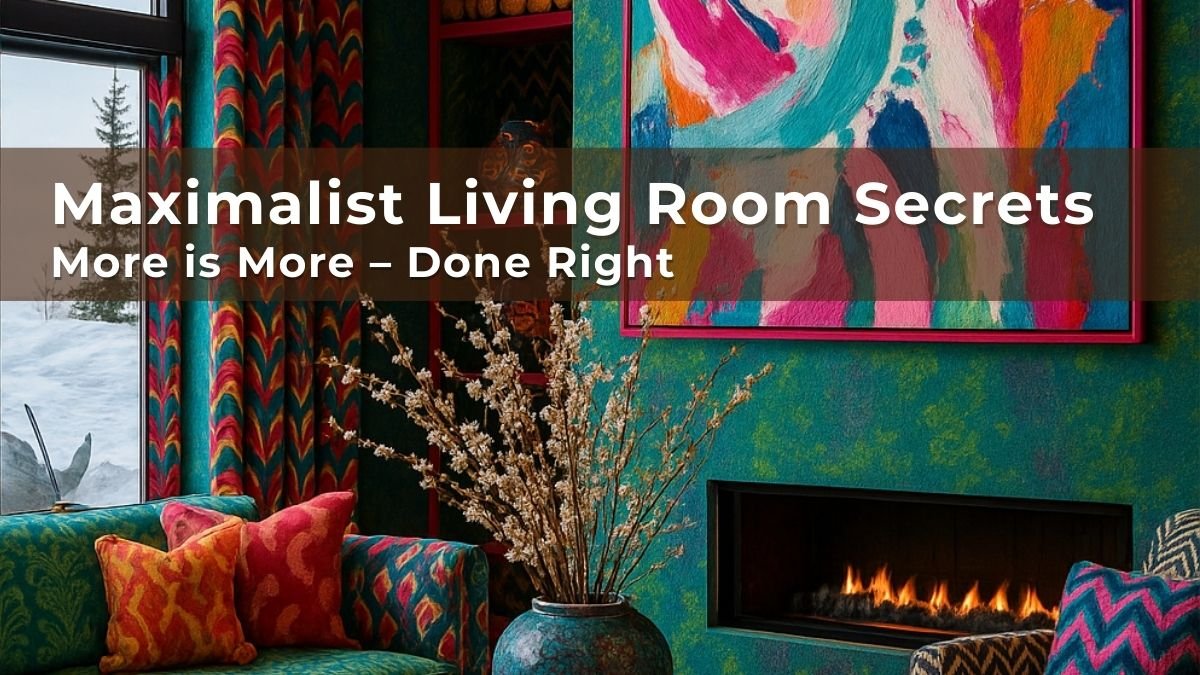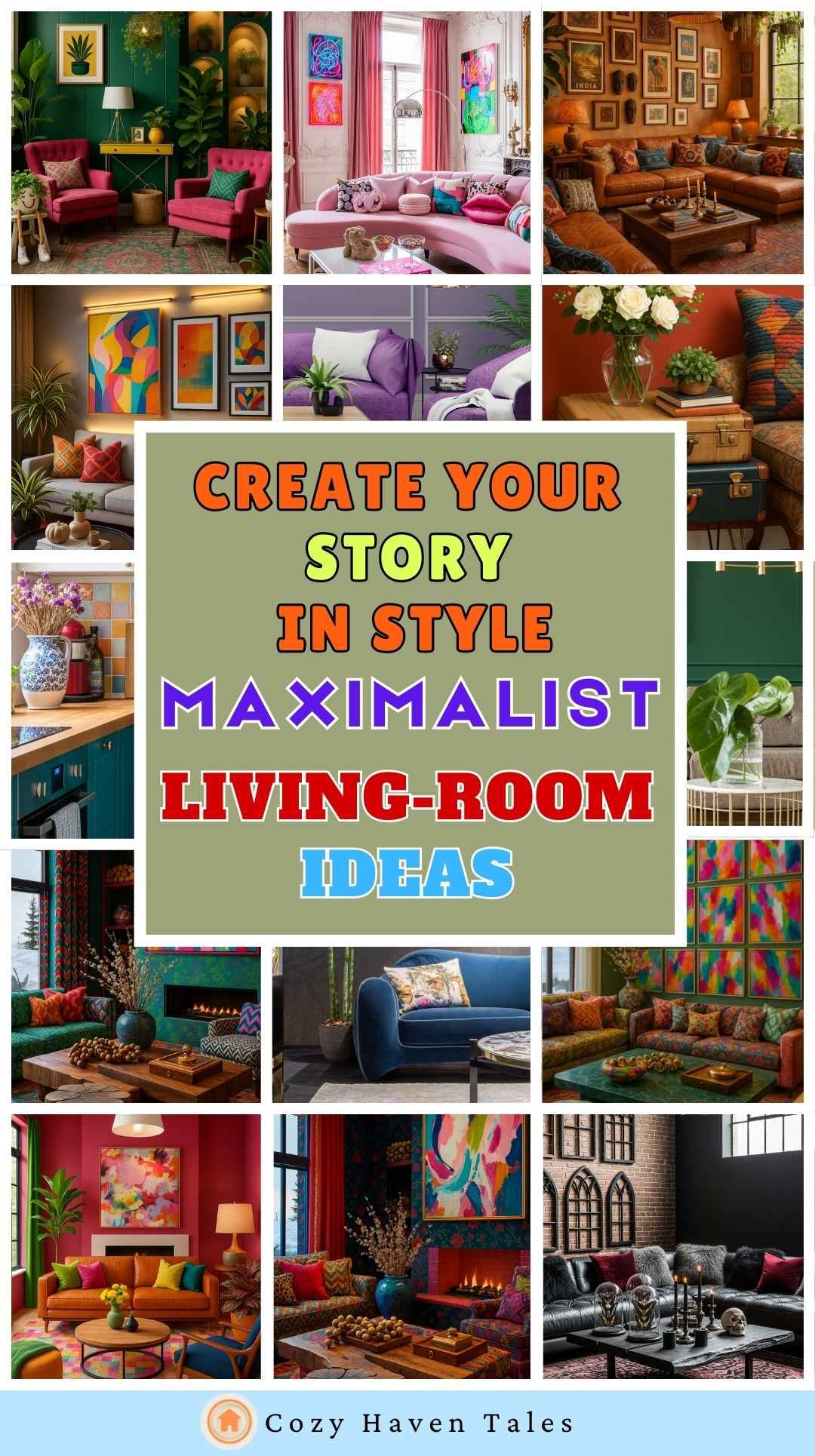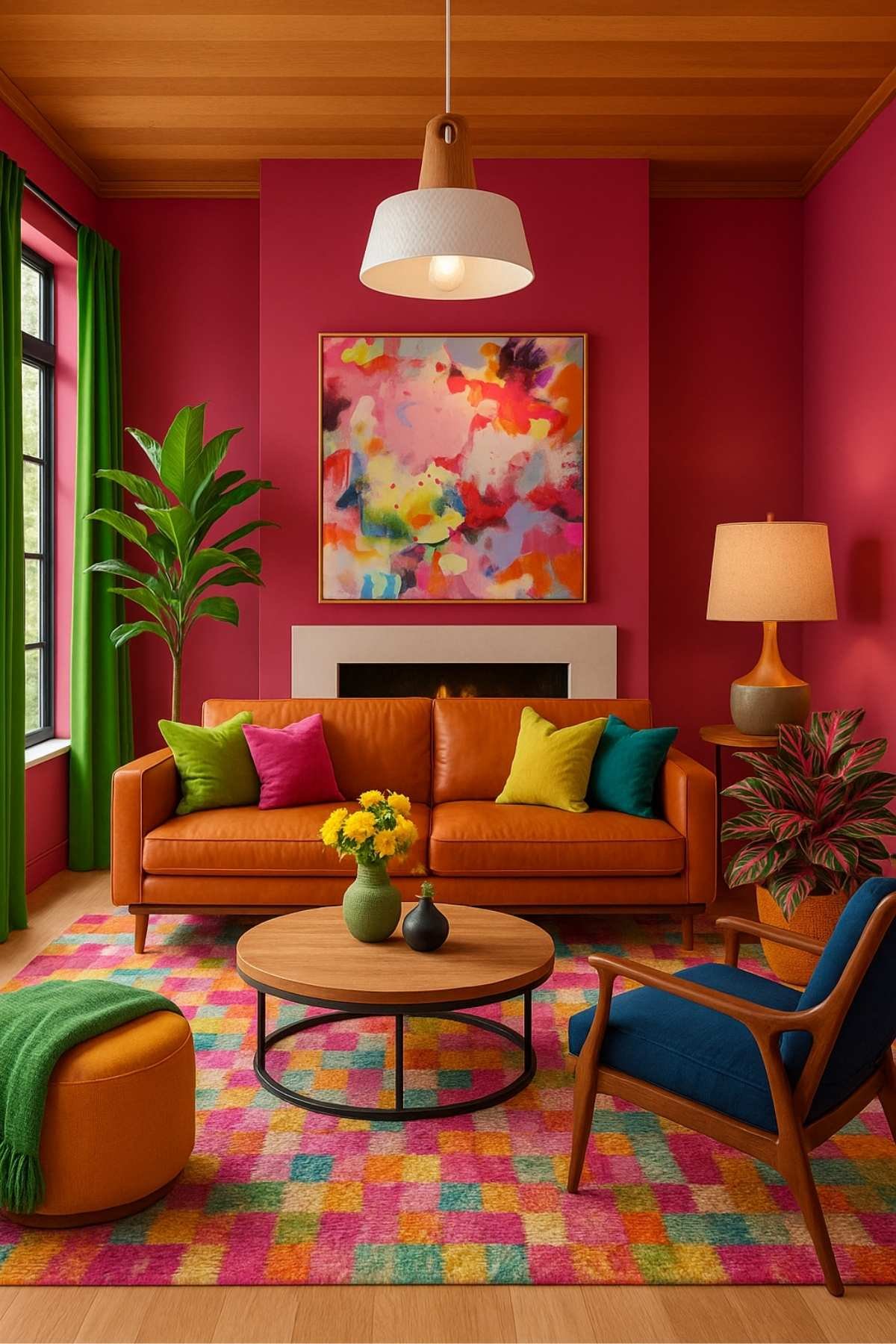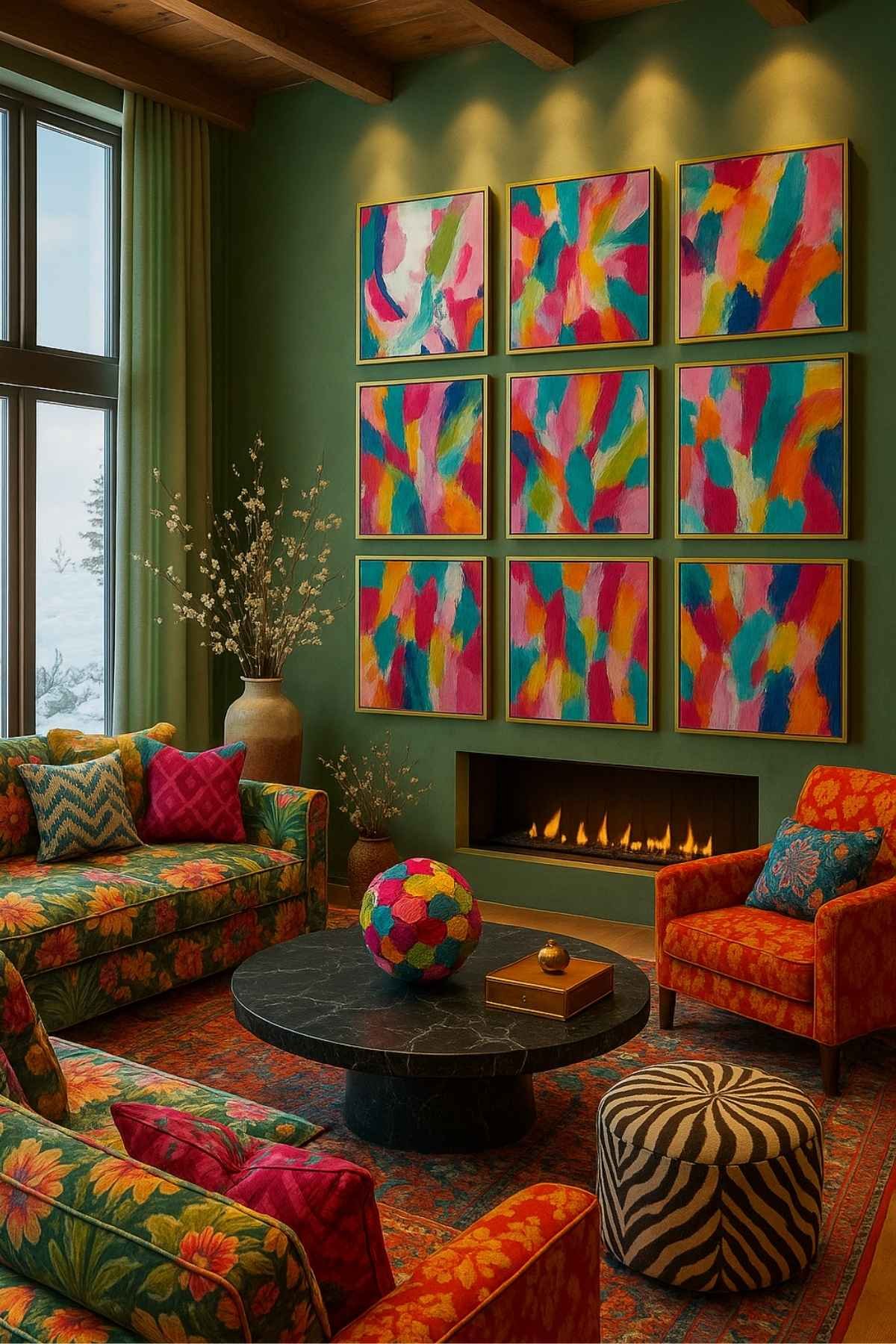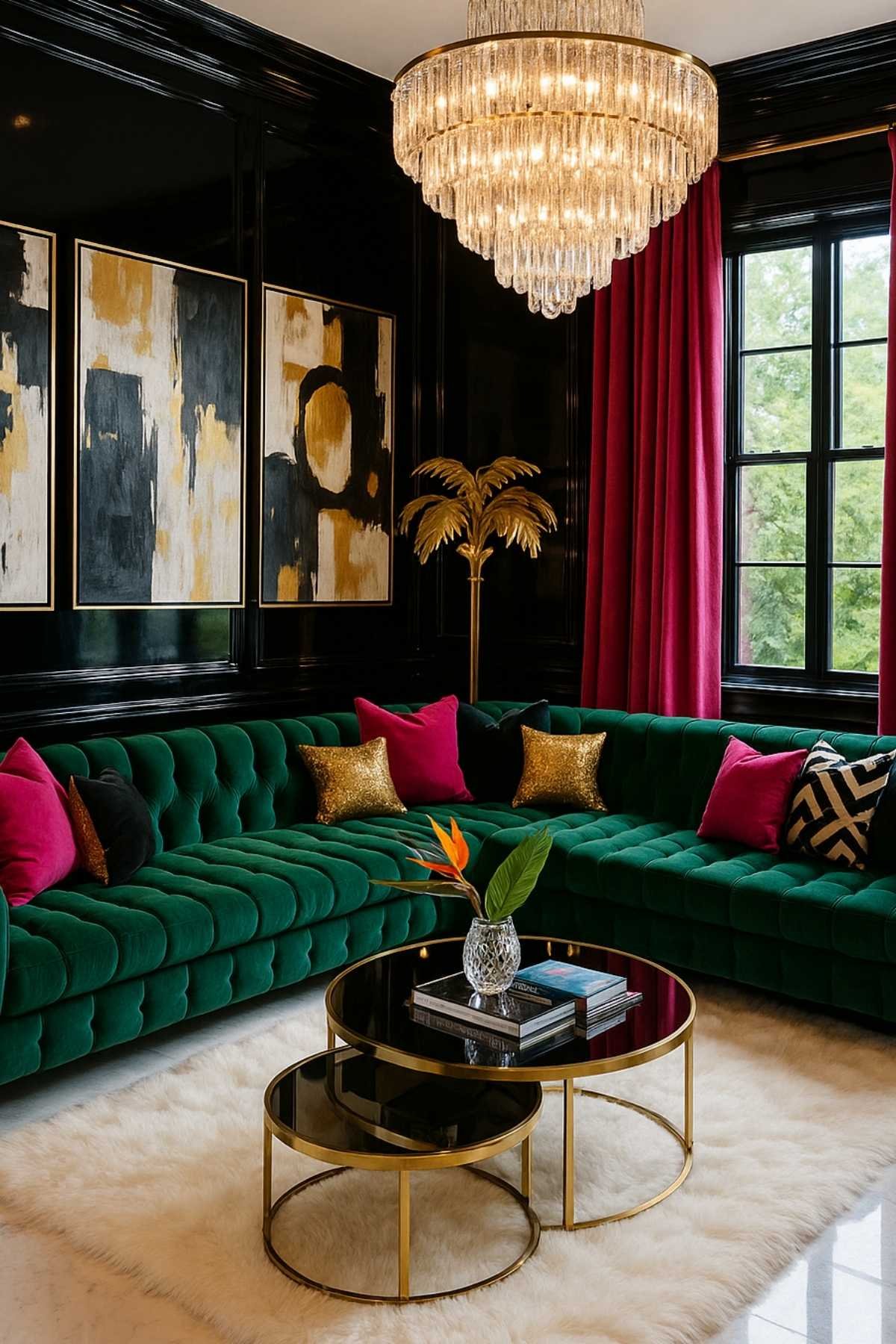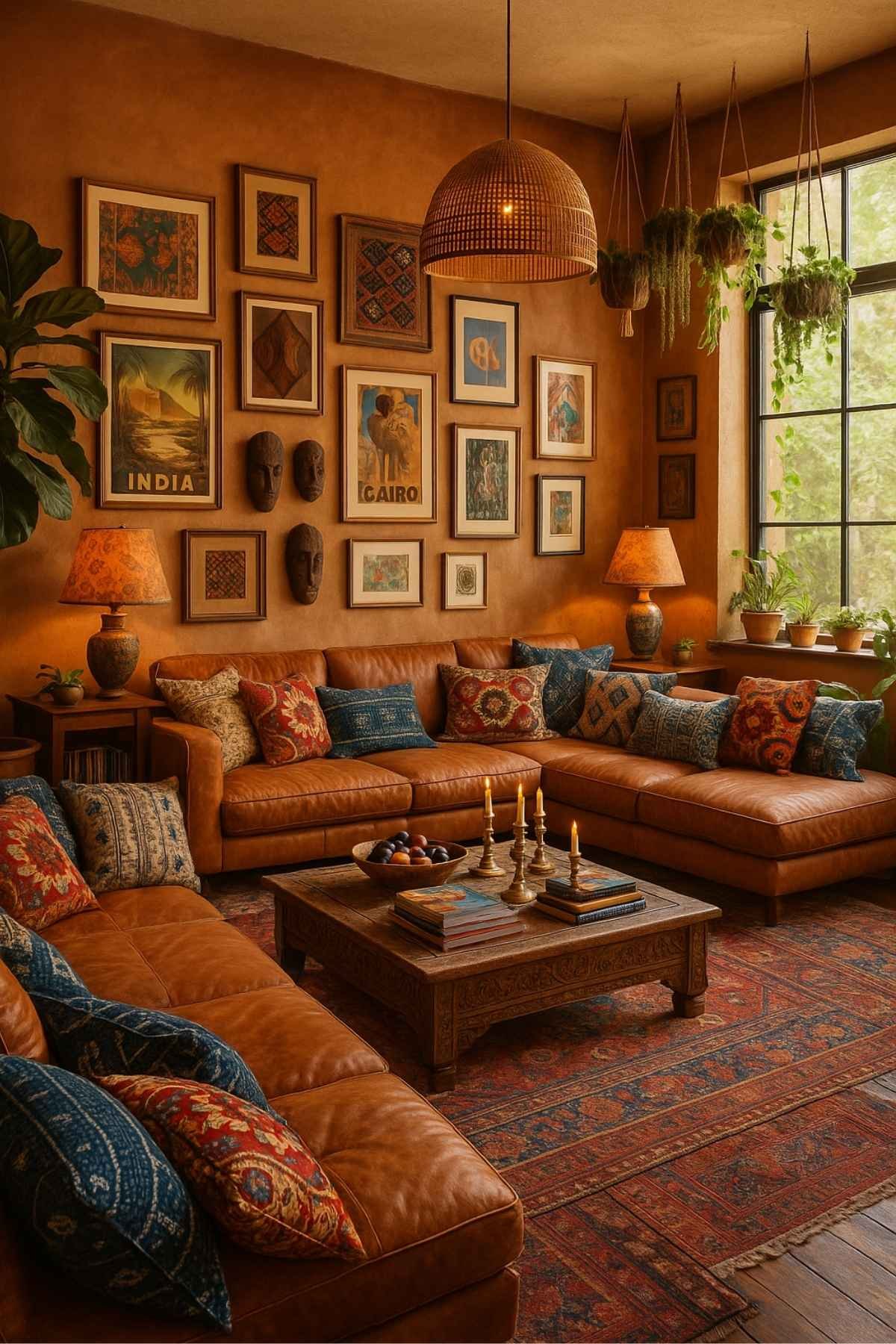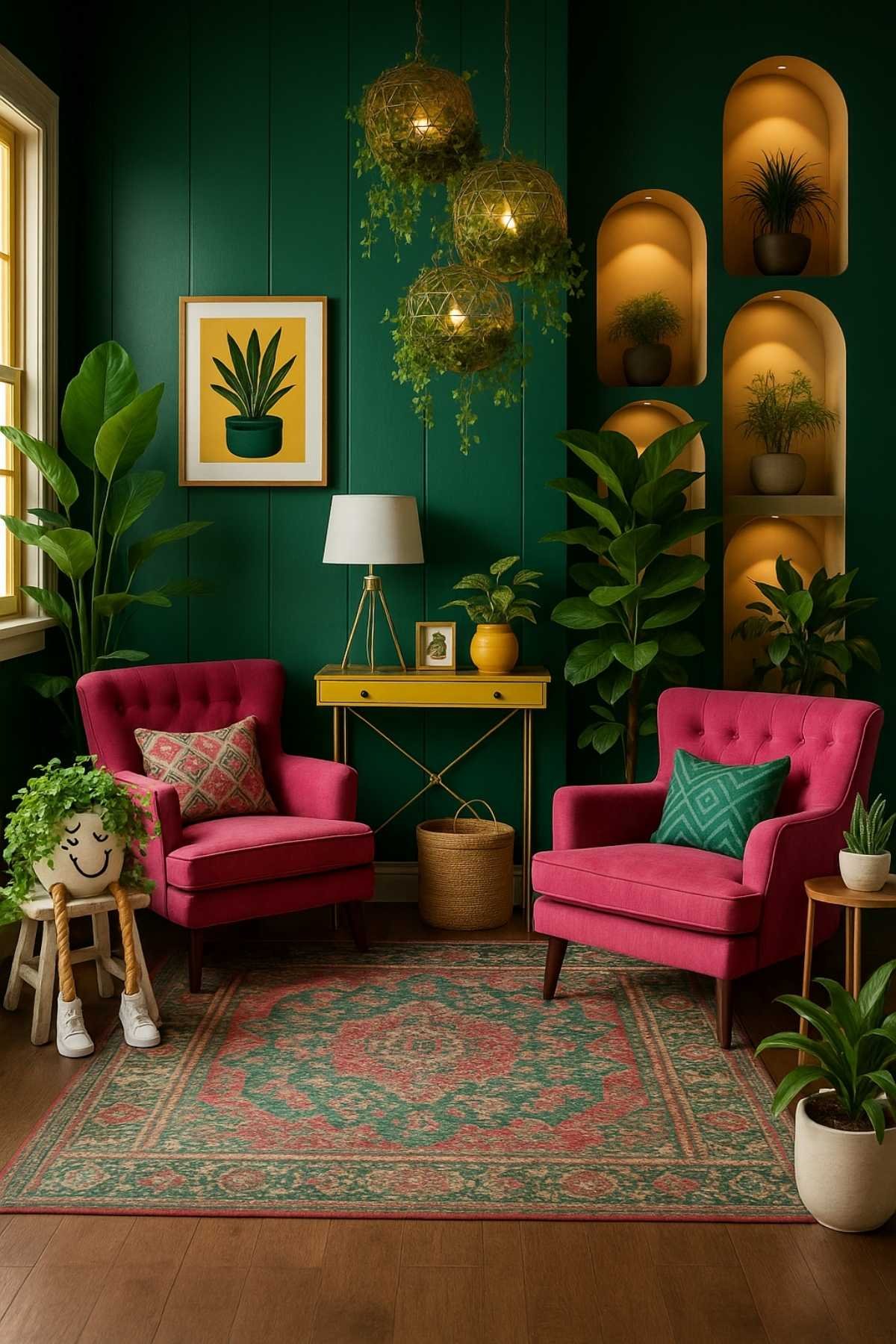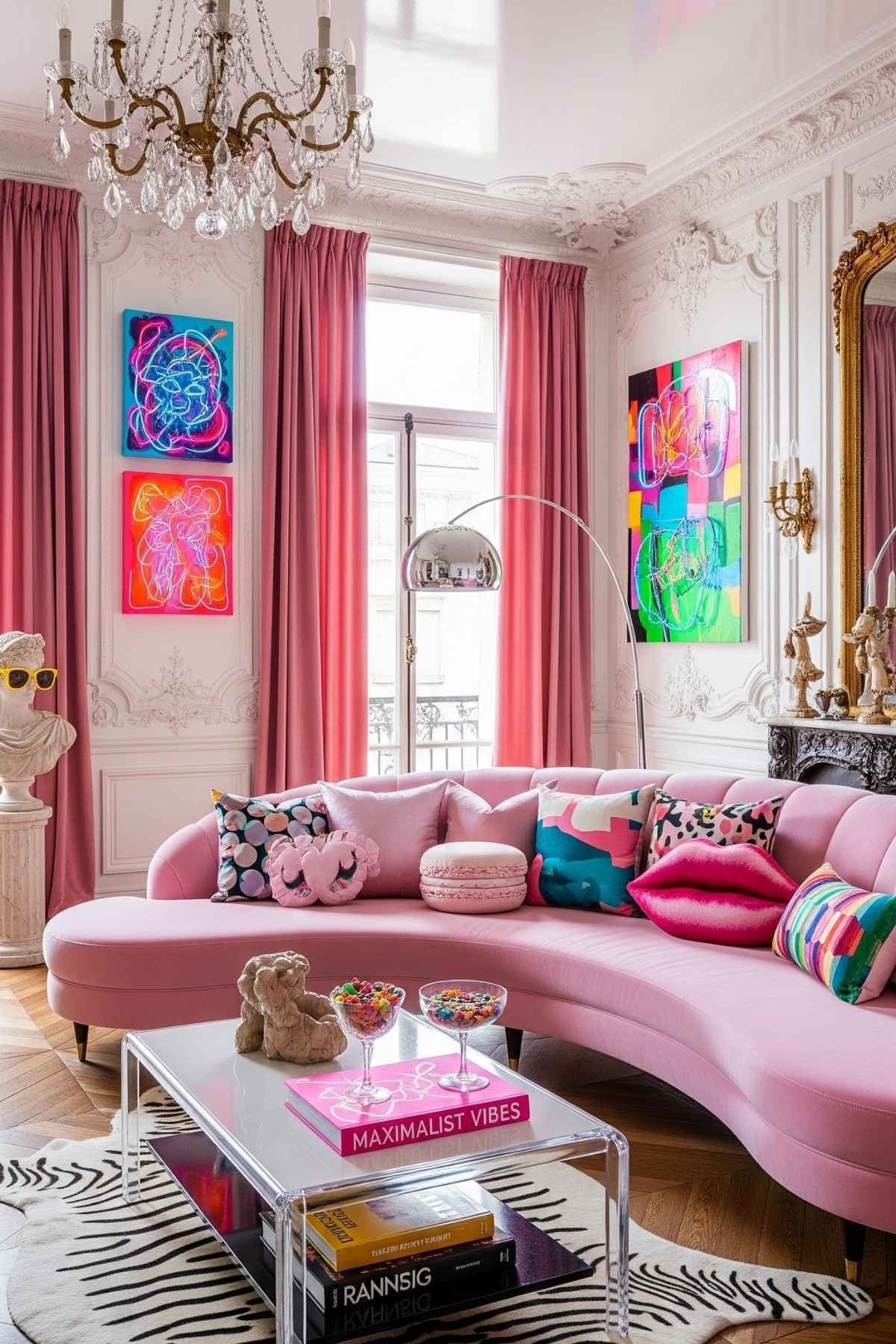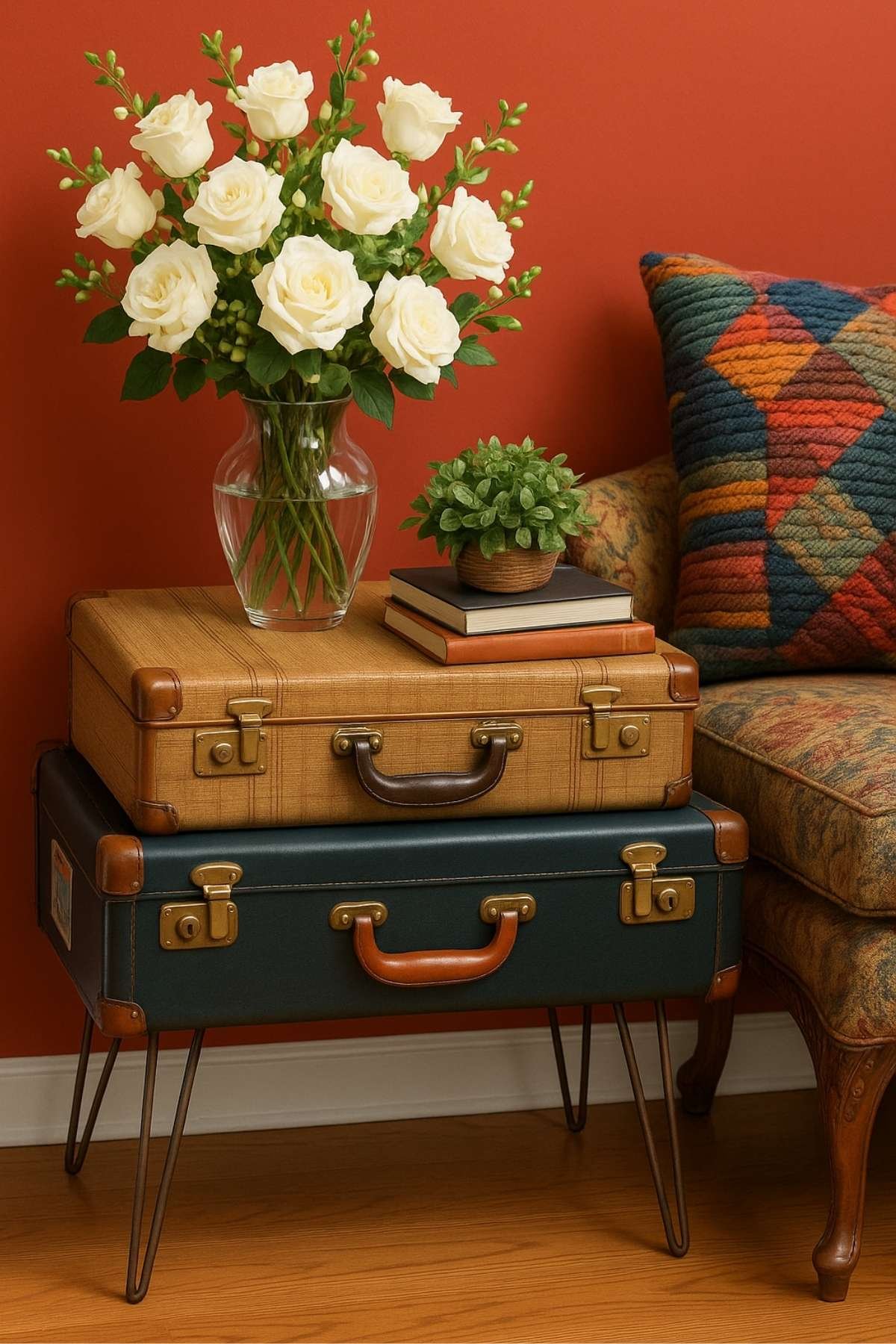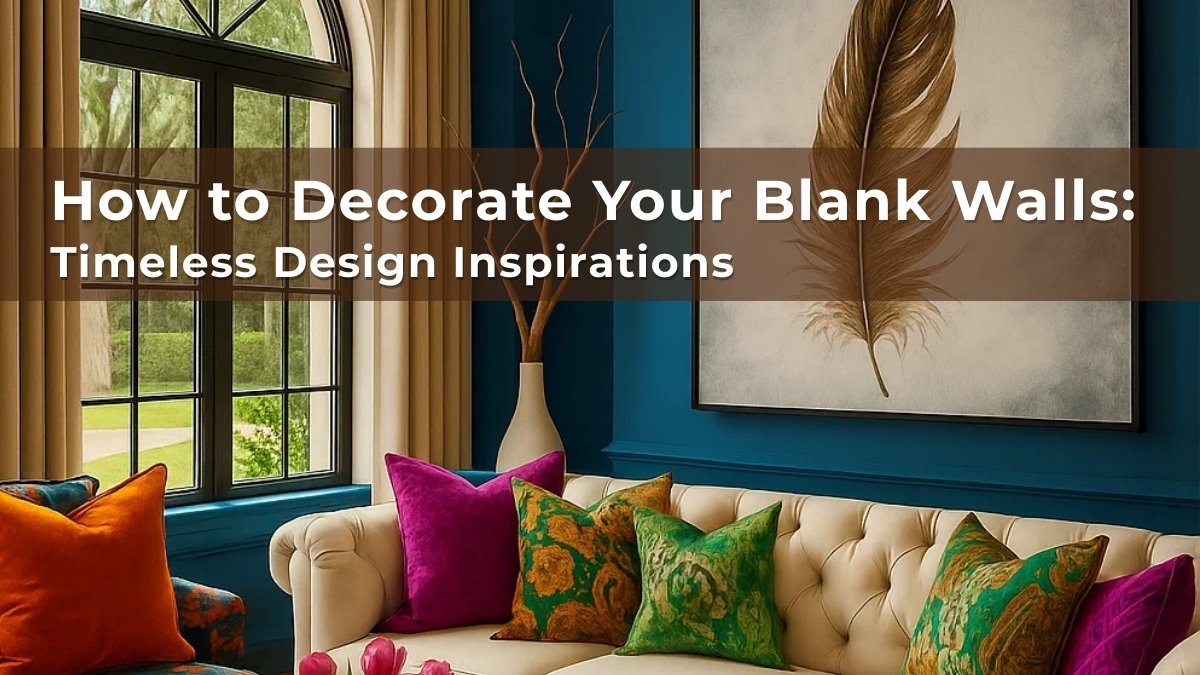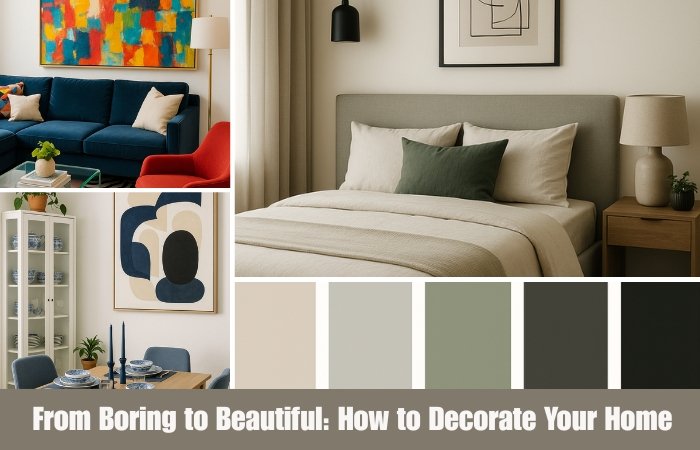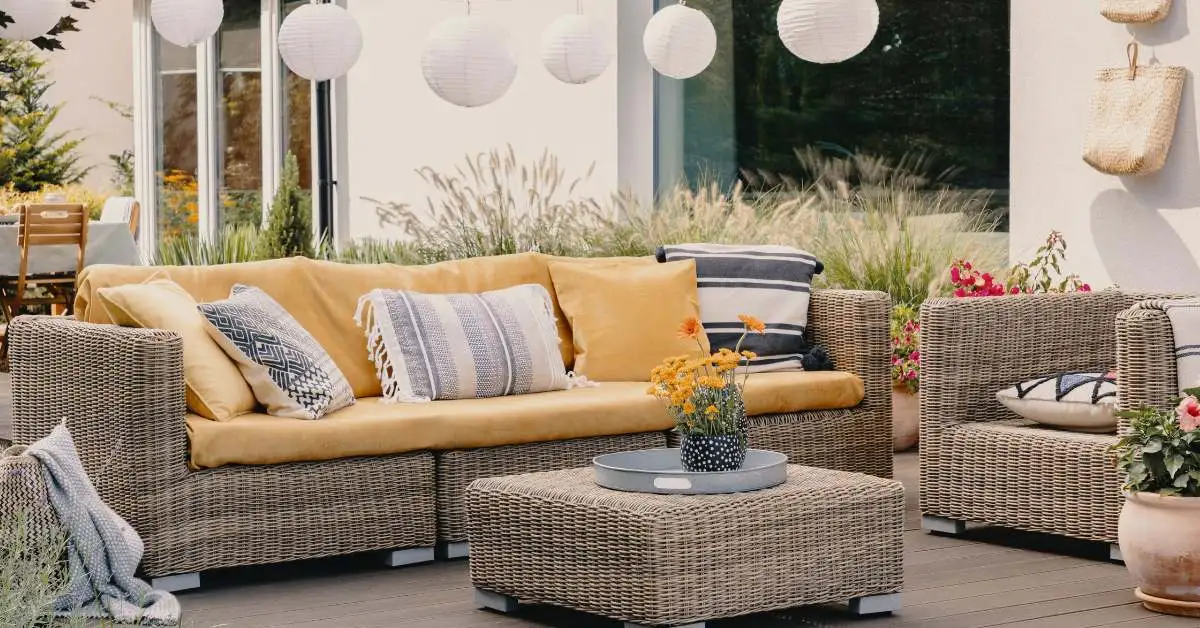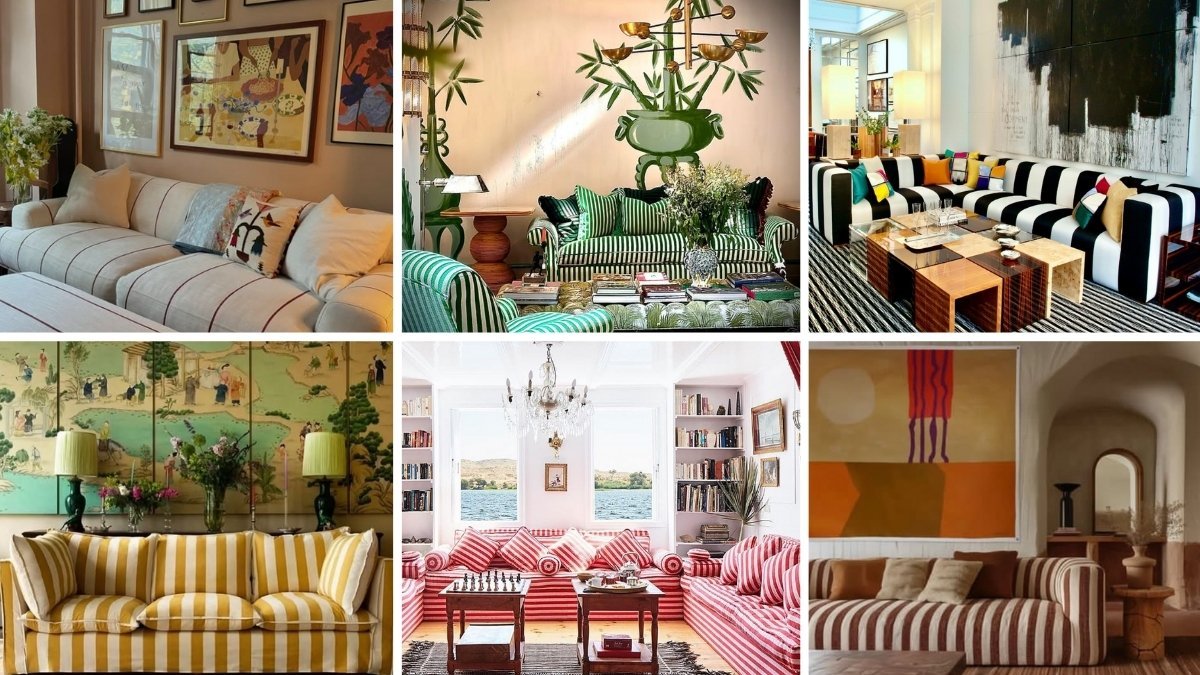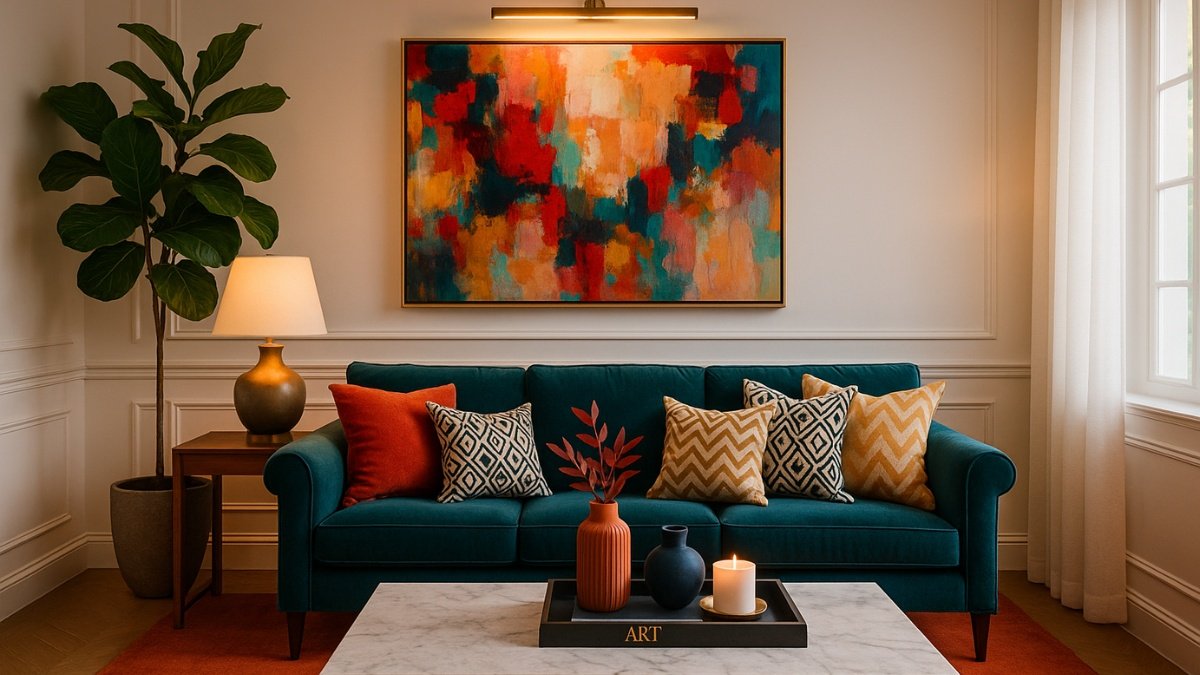Maximalist living room style is for those who think “less is more” just doesn’t fit. It’s not clutter—it’s a curated mix of colors, patterns, textures, and treasured pieces that tell your story. Every corner bursts with personality, turning your space into a vibrant, layered expression of you.
Readers Also Enjoyed:
- Colorful Maximalist Kitchen Ideas for a Bold and Happy Home
- Don’t Make This Mistake—Read These Orange Couch Ideas First!
- Modern Contemporary Living Room Ideas to Add Personality and Warmth
Ready to start? Here’s how to create a maximalist living room that feels full, not messy.
1. Start with a Bold Foundation
The first step is to get rid of the blank canvas. Maximalism thrives on a strong base. Paint your walls a rich, dramatic color like a deep forest green, a vibrant royal blue, or even a moody charcoal gray. If painting feels too permanent, a patterned wallpaper with a large-scale floral or geometric print can instantly set the tone. This foundation will be the anchor for everything else you add.
More to Explore: From Drab to Fab: 10 Ideas to Make Your Dull Home Look Vibrant
2. Mix and Match Your Furniture
Forget buying a matching furniture set. Maximalism encourages you to find pieces you love and bring them together. A plush velvet sofa can sit happily next to a leather armchair and a vintage wooden cabinet. Look for furniture with interesting shapes, carvings, or fabrics. The goal is to create a collected, “found over time” feel, rather than a sterile showroom look.
Related Reads: 7 Ways to Add Texture in Home Interior
3. Mix Patterns Fearlessly
This is where the magic really happens. Combine different patterns that you love. A floral-patterned rug can be a perfect base for striped throw pillows on your sofa. Geometric curtains can complement a paisley-print ottoman. The key is to vary the scale of the patterns. Use one large, dominant pattern (like on a rug) and then smaller patterns on pillows, throws, or artwork to create visual interest without overwhelming the space.
4. Layer Textures for Depth
Texture adds richness and makes a room feel comfortable and inviting. Layer different materials to build a cozy, tactile space. Think about a chunky knit throw blanket draped over a smooth leather sofa, a woven jute rug on a hardwood floor, or a faux fur pillow on a velvet chair. This mix of textures will make your living room feel lush and luxurious.
Other Posts You’ll Love: Confused About Your Interior Design Style? Use This Quick Finder
5. Create a Gallery Wall (or Several!)
This is your chance to showcase your personality. Fill an entire wall with art, photos, and decorative objects. Mix different frame styles and sizes, from ornate gold to simple black. Include family pictures, original art, vintage posters, and even mirrors. The key is to create a dynamic display that tells a story and draws the eye.
Related Reads:
- Don’t let your walls remain empty! Learn how to design a gallery wall.
- How to Decorate the Wall Behind the Bed with a Maximalist Touch
6. Embrace Bold Lighting
Lighting in a maximalist room is both functional and decorative. Instead of a single ceiling light, use a combination of sources. A dramatic chandelier can be a centerpiece, but also add a sculptural floor lamp in a corner and a couple of interesting table lamps. Choose lamps with unique shades or bases that add another layer of visual interest to the room.
7. Pile on the Plants and Books
Bring life and intellectual charm into your space. Fill corners with large, leafy plants like a Fiddle Leaf Fig or a Monstera. Place smaller potted plants on shelves and tables. And don’t forget books! Stack them on your coffee table, fill your bookshelves to the brim, or use them to prop up decorative objects. Books and plants add warmth, life, and a sense of history.
8. Display Your Collections
If you collect anything—from vintage ceramics and unique glassware to old maps or travel souvenirs—this is the time to show it off. Arrange your collections on shelves, in display cabinets, or on mantels. These personal touches are what make a maximalist room feel uniquely yours.
Color Palettes for a maximalist living room
- Jewel Tones: Emerald green, sapphire blue, ruby red, and amethyst purple.
- Tropical Vibrance: Fuchsia, turquoise, lime green, and sunny yellow.
- Moody Hues: Deep charcoal gray, mustard yellow, and burnt orange.
- Eclectic Earthy: Terracotta, olive green, cream, and pops of gold.
- Vintage Feminine: Dusty rose, sage green, burgundy, and soft gold.
Where You Can Go Wrong with maximalist living room (And How to Fix It!)
- Not having a focal point: A maximalist room still needs a hero—a large piece of art, a bold rug, or a statement sofa. Without a focal point, the room can feel chaotic instead of cohesive.
- Ignoring scale: A tiny rug in a large room or a huge armchair in a small corner can make a space feel off-balance. Pay attention to how the size of your items relates to the size of your room.
- Forgetting about negative space: Even in a maximalist room, a little empty space is needed for the eye to rest. Don’t fill every single inch of wall or floor.
- Only using new items: A maximalist room is built on character. Relying solely on brand-new, mass-produced items can make the room feel less personal and more like a store.
- Lack of lighting: A maximalist room can feel dark and oppressive without proper lighting. Use multiple light sources to illuminate different parts of the room and highlight your favorite pieces.
Winding Up Your Maximalist Masterpiece
A maximalist room is never truly “finished.” It’s a living, breathing space that evolves with you—where the joy lies in the hunt for new treasures and the endless possibilities of rearranging your beloved pieces. Decorating a living room in a maximalist style is about telling your story through your surroundings. This style invites you to keep adding, rearranging, and refining over time. The goal isn’t perfection, but personality. So, let your living room become a vibrant canvas for your favorite colors, patterns, and collected treasures.
FAQ: Maximalist Living Room Design
A: Not if you curate with intention. Group items, keep a unifying color palette, and use layering to make the space feel collected, not chaotic.
A: Absolutely! Use mirrors to expand the feel of the space, keep furniture proportional, and focus on layering textures and patterns without overcrowding.
A: Eclectic design mixes styles but can be minimal in volume. Maximalism focuses on abundance—layering colors, textures, and decor for a richer look.
